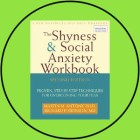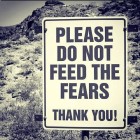Tag Archives:fear
International Bullying Prevention Association share
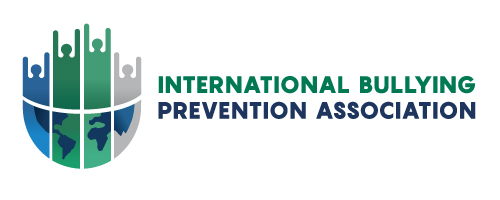 The International Bullying Prevention Association provides resources, training, and information regarding the prevention of bullying, pulling from the latest in scientific research. Periodically, they host webinars that are geared towards parents and educators, for free! You can register to participate when it is happening live or, if you are a member (which costs $25 at the time of this post), you check out their webinar archives at your leisure. Additionally, they host an annual conference to discuss the latest research and programs that are being used successfully.
The International Bullying Prevention Association provides resources, training, and information regarding the prevention of bullying, pulling from the latest in scientific research. Periodically, they host webinars that are geared towards parents and educators, for free! You can register to participate when it is happening live or, if you are a member (which costs $25 at the time of this post), you check out their webinar archives at your leisure. Additionally, they host an annual conference to discuss the latest research and programs that are being used successfully.
Shyness and Social Anxiety Workbook: Proven, Step-by-Step Techniques for Overcoming your Fear by Martin M. Antony PhD and Richard Swinson MD FRCPC FRCP share
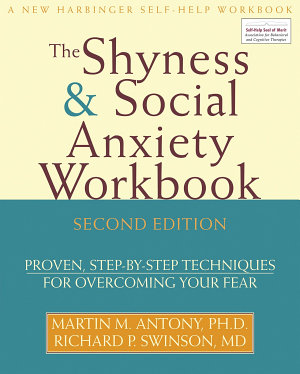 I recommend using this book when working with adults and some teens who have high levels of shyness and social anxiety. In a clear, and easy to read fashion, this book takes you step-by-step through the process of learning about how cognitive behavioral therapy (CBT) views shyness and social anxiety and is a powerful tool in overcoming how these thoughts and feelings can hold you back from living your life in a way that you are comfortable and happy with. CBT is a therapeutic philosophy and a large body of scientific research strongly supports CBT as the foremost treatment of social anxiety.
I recommend using this book when working with adults and some teens who have high levels of shyness and social anxiety. In a clear, and easy to read fashion, this book takes you step-by-step through the process of learning about how cognitive behavioral therapy (CBT) views shyness and social anxiety and is a powerful tool in overcoming how these thoughts and feelings can hold you back from living your life in a way that you are comfortable and happy with. CBT is a therapeutic philosophy and a large body of scientific research strongly supports CBT as the foremost treatment of social anxiety.
I do think that most people would still need a therapist to be guiding them through the process because for the individual working to learn these skills and challenging themselves to try new things, it can take a lot of energy. When a therapist is coaching you in the sidelines (and celebrating your successes with you), it frees you up to devote all of your energy towards growing. However, over time, these are skills that you will learn and can take with you forever. Once you understand how it works and how powerful it is, you will be able to use this approach to tackle any similar issues that should come up for you in the future.
As a therapist, I don’t use this book alone. I supplement it with concrete, scientifically grounded information about relaxation breathing, Growth Mindset as well as other customized handouts and tally sheets for homework.
TED Talk - What Fear Can Teach us presented by Karen Thompson Walker (video) share
Dan Zadra says (according to the internet), “Worry is a misuse of imagination.” So it seems to be a logical extension of that idea to say that we worry most about the things that are easiest to imagine. In this TED talk, Karen Thompson Walker cites history and scientific research to assert that this is indeed the case. Knowing this has the potential to help us make more informed and practical decisions…if we strive to focus on facts and not the lurid details that our brains can conjure. It can also help us short-circuit our brain’s inclination to borrow trouble and leave us marinating in the anxiety of what is possible, rather than what is probable. When we recognize our fears for what they are, a story that our mind is creating about what could possibly happen, after taking a logical look about whether the fear is something truly worth worrying about, we can choose to give less importance to some of the scary stories that our brains can distract us with.
PS – If anyone has a reliable citation for the quote above, please let me know!
Panic Attacks Part 3: Fear of the Fear - Don't Let Panic Attacks Take Over Your Life share
Previous articles in this series:
- Panic Attacks Part 1: What is Panic & Why We Need It
- Panic Attacks Part 2: The Antidote for Panic & Relaxation Breathing
Panic attacks feel very intense when you have them. At best, it’s not a comfortable feeling. At worst, it feels very scary because your body feels like it’s out of control. Some people even worry that they are having a heart attack. If you are experiencing these symptoms for the first time, definitely talk with a medical professional to rule out any medical causes before treating the symptoms as a panic attack. This is important for two reasons. The first is that you need to get a proper diagnosis. The second is that if you are constantly worrying that you are having a heart attack…that’s going to increase your anxiety and make successfully treating panic very difficult.
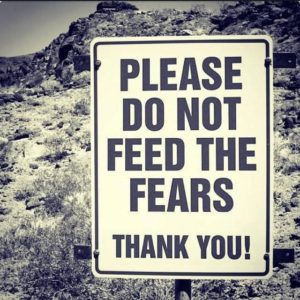 Once you know that your body is healthy and ok, it’s time to dig in to the emotional aspects that come into play with panic and anxiety. When you worry too much about the possibility that you might have a panic attack, then this worry itself can become the trigger for your next panic attack. I call this having “fear of the fear (that it will happen again).” With the use of acceptance, information, “growth mindset,” and skill development, here are some guidelines that work against the negative spiral that can happen when people start to develop a “fear of the fear.” This article assumes that you already have started working on developing the skills for turning around a panic attack and is part 3 of a four-part series of articles I hope to complete. Hopefully, I’ll get part 4 up soon!
Once you know that your body is healthy and ok, it’s time to dig in to the emotional aspects that come into play with panic and anxiety. When you worry too much about the possibility that you might have a panic attack, then this worry itself can become the trigger for your next panic attack. I call this having “fear of the fear (that it will happen again).” With the use of acceptance, information, “growth mindset,” and skill development, here are some guidelines that work against the negative spiral that can happen when people start to develop a “fear of the fear.” This article assumes that you already have started working on developing the skills for turning around a panic attack and is part 3 of a four-part series of articles I hope to complete. Hopefully, I’ll get part 4 up soon!
- Recognize that this is a new situation for you and, because of that, it makes sense that it’s hard in the beginning to figure out what’s happening and how best to manage it. Also, know that you’re not alone. There are many people who have or are currently going through this too.You are having, what is called, a panic attack. [Growth Mindset]
- Remember that fight or flight mode is a normal thing that our bodies do. The only problem is that it’s getting triggered when you don’t actually need to respond physically to an emotionally stressful situation. The most important thing to know here is, NO HARM WILL COME TO YOUR BODY AS YOU EXPERIENCE IT (your body physically revving up to fight or flee). It does feel yucky to be in physical panic mode. This is especially true because your body, in that moment, is primed with an abundance of energy to physically react and that means that you experience temporary physical changes to your body (i.e. increased heart rate, quick & shallow breathing, increased blood circulation to muscles, decreased blood circulation to the “rational” part of your brain, and more), but your body naturally knows how to shift out of this mode when the perception of a physical threat is gone. [Watch this great video about how the US government has learned to train Navy SEALS not to panic.]
- Accept that this is not your last panic attack. What I’m saying here is find a way to be ok with knowing that it will happen again AND that should one happen and your growing relaxation and cognitive skills can’t turn it around, you can ride it out until it’s done and be still be ok. In general, the goal is for the panic attacks to start reducing in intensity as you get better at turning them around but this won’t happen if you avoid panic attacks, or things that might cause them, rather than face them. [Acceptance]
- Continue to experiment with and practice various relaxation techniques (relaxation breathing is the most important one for panic) and good self care habits so that you can hone your skills and have more “tools” in your “toolbox” when the need arises. [Skill Development]
- Work on developing cognitive strategies that can help prevent panic attacks from happening or intervene at the early signs of panic so that you can prevent a full blown physical response. [Skill Development]
- Keep a list of things that help turn your panic attacks around so that you can refer to the list the next time. [Skill Development]
- Remembering that low blood sugar, hypoglycemia, can mimic the beginning feelings of a panic attack, carry a healthy snack with you that has a nice combination of protein and complex carbs. [Check out this podcast by Dr. Kristen Allot about why this is so incredibly important.]
- Minimize or, ideally, eliminate caffeine. Drink water. Enjoy water. Did I mention water? [Information]
Remaining article in this series:
- Panic Attacks Part 4: Time To Tune Into Your Early Warning System (coming soon)


